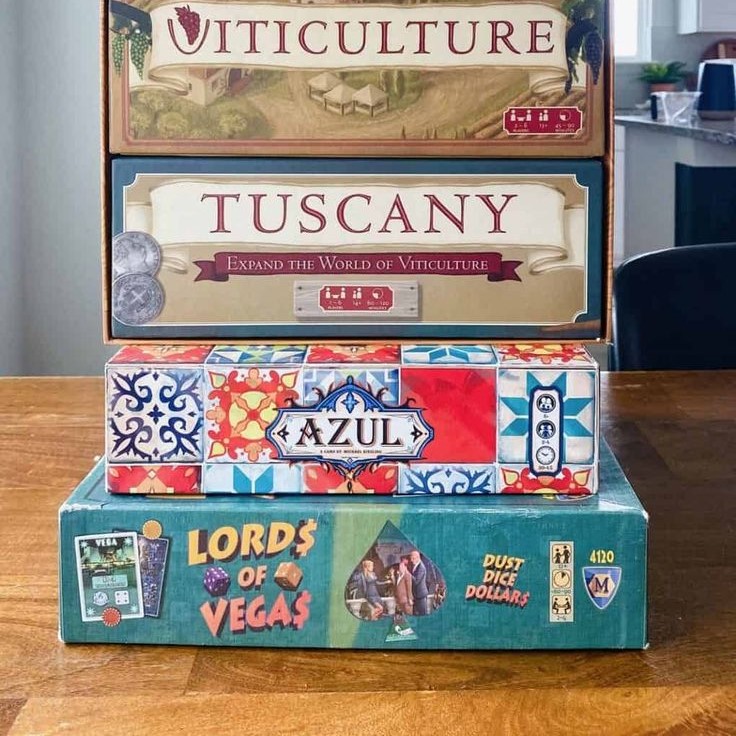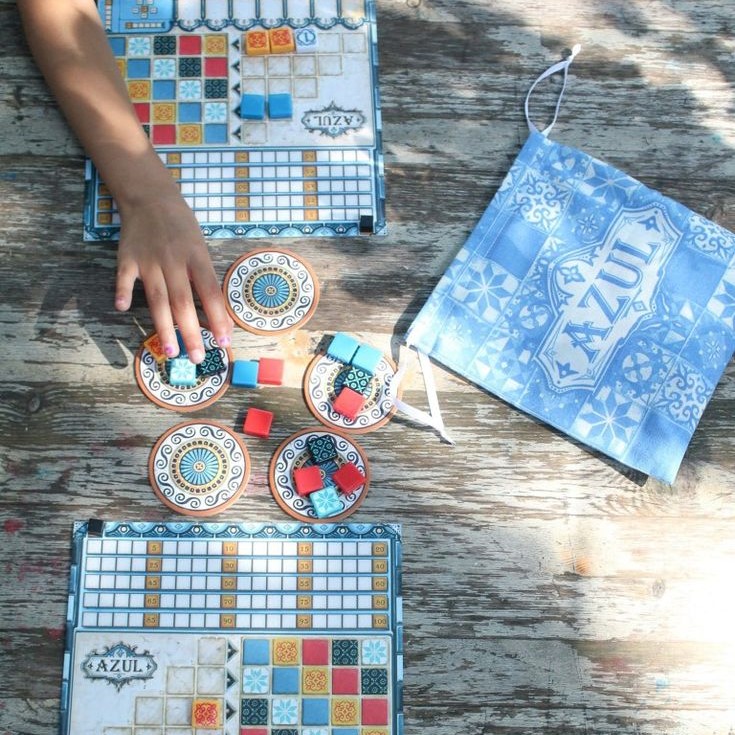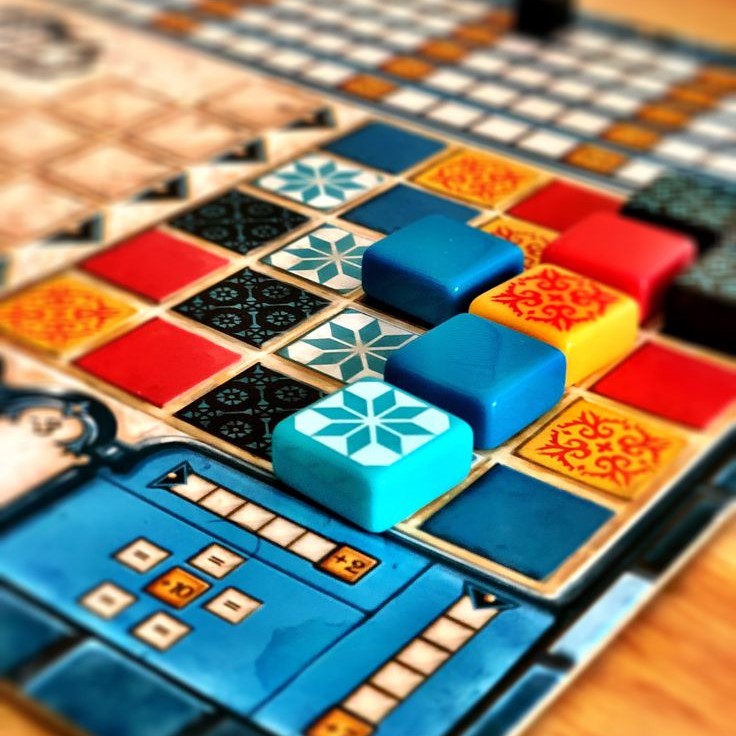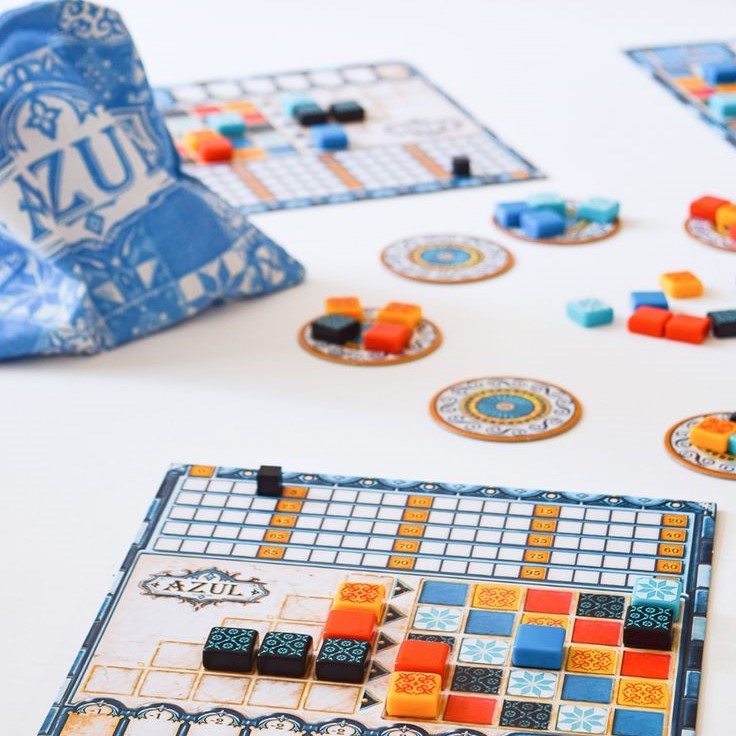Introduction
The Azul board game has gained immense popularity among board game enthusiasts since its release. This visually stunning abstract strategy game invites players to become artisans, tasked with decorating the walls of a royal palace using vibrant and colorful tiles. Understanding the components and game mechanics is essential for both newcomers and veterans aiming to maximize their gameplay experience. In this article, we will unpack the various components found in Azul, delve into the game mechanics that drive strategic decisions, and provide tips on how to excel at this engaging game.

Overview of Azul Board Game
- Game Background: Azul was designed by Michael Kiesling and published by Plan B Games. Drawing inspiration from the intricate tiled designs of the Alhambra in Spain, the game has not only become a staple for board game enthusiasts but also won numerous awards, including the prestigious Spiel des Jahres in 2018. Its combination of simple rules and deep strategic elements makes it appealing to a broad audience.
- Game Objective: The primary objective of Azul is to score the most points by placing tiles on your player board. Each player must carefully choose tiles from a shared pool and strategically place them according to the rules of the game. Success in Azul requires thoughtful planning and foresight, making it a compelling challenge for players.
- Target Audience: Azul appeals to various audiences, from casual families looking for fun game nights to hardcore board game fans seeking complex strategies. Because of its accessibility paired with depth, Azul can engage different types of players, making it a versatile addition to any game collection.
Components
To fully grasp the gameplay mechanics of azul board game, it helps to understand its components. Here’s a detailed breakdown:
- Player Boards: Each player obtains a beautifully illustrated player board designed to organize their tile placements. The board contains sections for placing tiles, keeping score, and managing the tile storage area, where players keep unused tiles before they are placed.
- Tile Factory Displays: At the start of each round, players set up factory displays with a selection of colorful tiles drawn from the central supply. These displays play a critical role, as players take turns selecting tiles to add to their player boards.
- Tiles: The game includes uniquely shaped tiles in different colors, enhancing its visual appeal. These tiles are made of durable material, designed to withstand fumbles during gameplay and to gleam on your player board, creating an eye-catching, mosaic effect.
- Scoring Track: The scoring track is designed for players to record their points as they complete rows and columns on their boards. It visually represents each player’s progress over the course of the game.
- First Player Marker: The first player marker helps determine who will start each round and adds an extra strategic layer. If you take the marker, you may gain an advantage in tile selection but risk penalties if you do not place tiles effectively.
How to Play the Azul Board Game
Understanding the gameplay mechanics is crucial for enjoying Azul. Below is a detailed description of how the game unfolds:
Setup
- Distributing Player Boards: At the beginning of the game, each player receives a player board. This board will be crucial for organizing their tiles and tracking their score throughout the game.
- Preparing the Tiles: Players shuffle the tiles and place them into a central supply. This step ensures that the tiles are mixed thoroughly and ready for selection during the game.
- Arranging Factory Displays: Players fill the factory displays with a predetermined number of tiles from the central supply. Typically, each factory display contains four tiles, making it easy for players to see their options when selecting tiles during their turn.
Turn Structure
- Taking Turns: Players take turns selecting tiles from either a factory display or the central pool. Each player must choose carefully to optimize their strategy and hinder their opponents.
- Placing Tiles: After selecting tiles, players place one color of tile onto their player boards according to the game rules. This placement reflects their strategy and contributes to their overall score for that round.
Scoring Mechanics
- Calculating Points: Once all tiles have been selected during a round, players calculate their points based on how they have placed their tiles. This scoring process is essential for tracking progress throughout the game.
- Influencing Factors: Players earn points influenced by the completion of rows and columns on their boards. Additionally, they may receive bonus points for forming specific patterns, which can significantly increase their overall score.
Ending the Game
- Completing the Last Move: The game ends at the conclusion of a round when a player successfully completes one row on their player board. This milestone indicates that the game can conclude, prompting the final scoring phase.
- Tallying Points: After the final round, players tally their points. This calculation involves adding together the scores earned throughout the game, including any bonuses received for specific achievements.
- Determining the Winner: Finally, the player with the highest score emerges as the winner of Azul. This conclusion highlights the strategic choices made throughout the game and underscores the competitive nature of tile placement.
Tips for Playing Azul Effectively
To get the most enjoyment and success out of your games, consider the following strategies:
- Planning Ahead: One of the fundamental strategies in Azul is to think several turns ahead. By assessing the tiles available and considering what you need to complete your rows, you can make more informed decisions.
- Tile Management: Managing your tiles effectively is key. Keep track of the tiles you’ve placed and those still available. Prioritize acquiring the tiles you need while being mindful of how your selections may impact your opponents.
- Observing Opponents: Pay attention to your opponents’ board states and selections. By understanding their strategies, you can make informed decisions that either support your goals or hinder theirs. Be proactive rather than reactive to your opponent’s strategies.
Common Mistakes to Avoid
Learning from the mistakes of others can greatly enhance your gameplay experience. Here are common pitfalls to avoid:
- Ignoring Scoring Potential: Sometimes new players get too focused on completing their boards without considering scoring potential. Efficiently filling rows and columns earns points, so always look for the highest-scoring moves available.
- Hoarding Tiles: Players may feel inclined to take every tile that seems beneficial to avoid giving it to an opponent. However, this can lead to penalties if a player is left holding tiles at the end of a round. Always think about maximizing your own moves instead of simply blocking others.
- Neglecting Your Board: It’s easy to become overly focused on what your opponents are doing. Remember, your primary goal is to fill your own board effectively. Stay engaged with your tiles and avoid losing sight of your placement strategies.
Expanding the Azul Experience with Variants
The success of Azul has led to exciting expansions and variations that enhance the core experience:
- Sequel Games: Azul has inspired sequels, such as Azul: Stained Glass of Sintra and Azul: Summer Pavilion. Each standalone game introduces new mechanics and strategies while retaining the beautiful tile-based gameplay that made the original popular.
- Exploring Expansions: Each expansion provides additional elements that can change the way the game is played. For example, Stained Glass of Sintra introduces special glass pieces that affect scoring differently, providing new strategic opportunities for players.
- Cross-Game Strategies: If you have enjoyed Azul, consider exploring other strategy games. Titles like Sagrada and Patchwork complement the gameplay style of Azul, offering fresh experiences while maintaining familiar mechanics.
Caring for Your Azul Game
Proper care will ensure your Azul game remains in excellent condition for years to come:
- Storage Recommendations: Store your game in a cool, dry place. Use the original box to protect the components from dust and accidental damage. Keeping your game organized helps maintain its quality over time.
- Handling Tiles with Care: While the tiles are designed to be durable, avoid exposing them to excessive moisture or bending. Proper handling extends the life of your components and maintains the game’s aesthetic appeal.
- Organizing Your Game: After each game session, take a few minutes to organize the tiles and components back into the box. This ensures a smooth setup for your next game night and keeps the components in pristine condition.
Conclusion: Why You Should Play Azul Today
In summary, the Azul board game offers a unique blend of strategic depth, stunning visuals, and engaging gameplay. Understanding its components and mechanics allows players to fully enjoy the immersive experience it provides. Whether you’re new to the game or a seasoned veteran, the strategies and tips outlined in this article can enhance your success and enjoyment.
Azul invites players to think critically, plan strategically, and engage in friendly competition. So gather your friends and family, set up the tiles, and prepare for an exciting journey into the world of Azul. With its beautiful design and captivating strategies, Azul promises countless memorable game nights. Enjoy the thrill of becoming an artisan in the world of tiles and let the fun begin!








